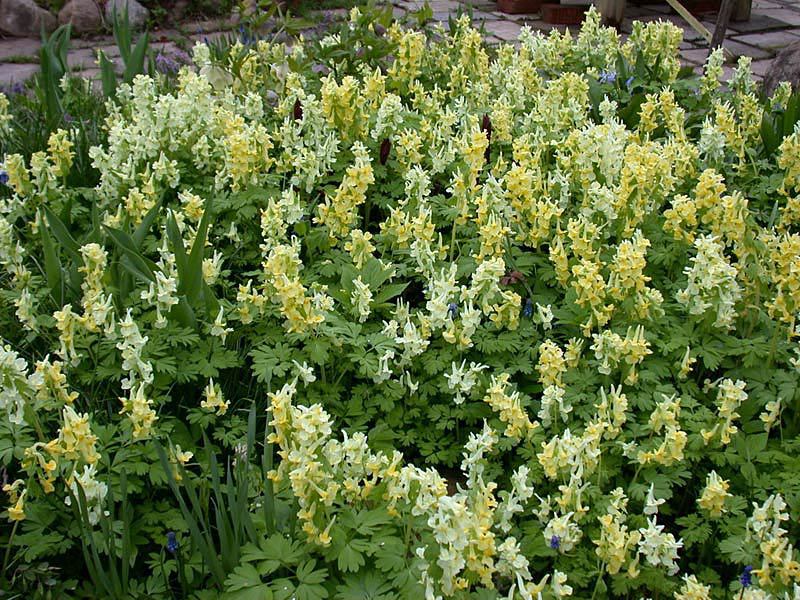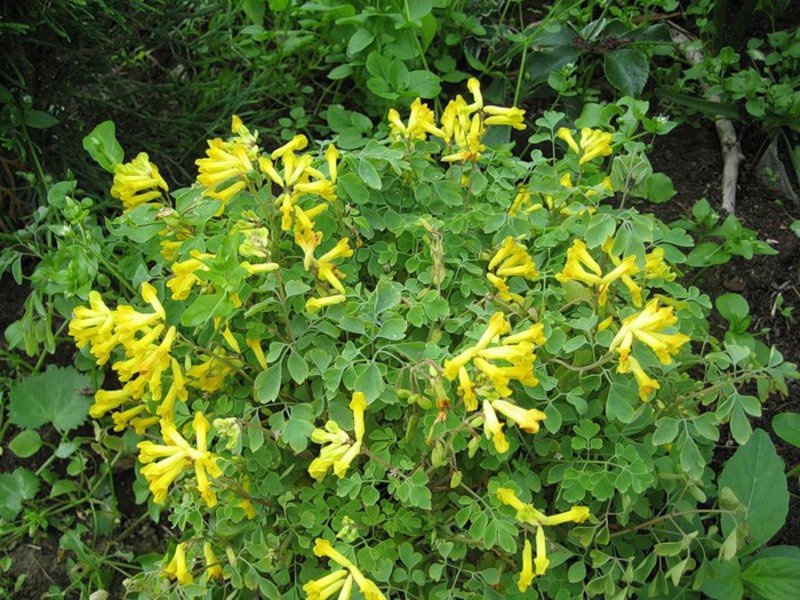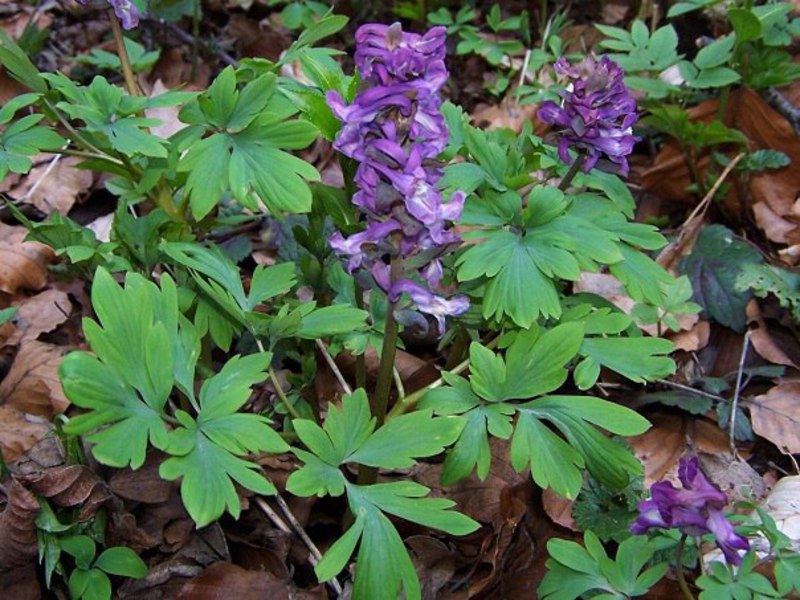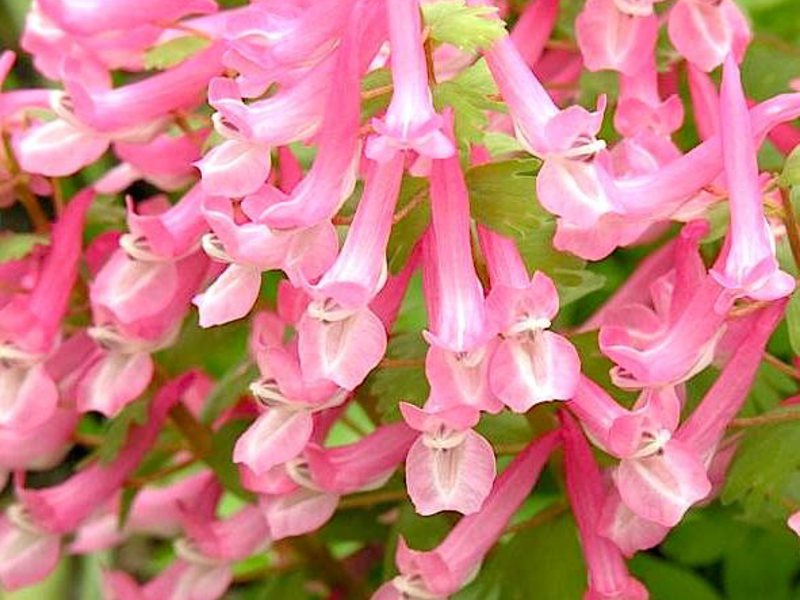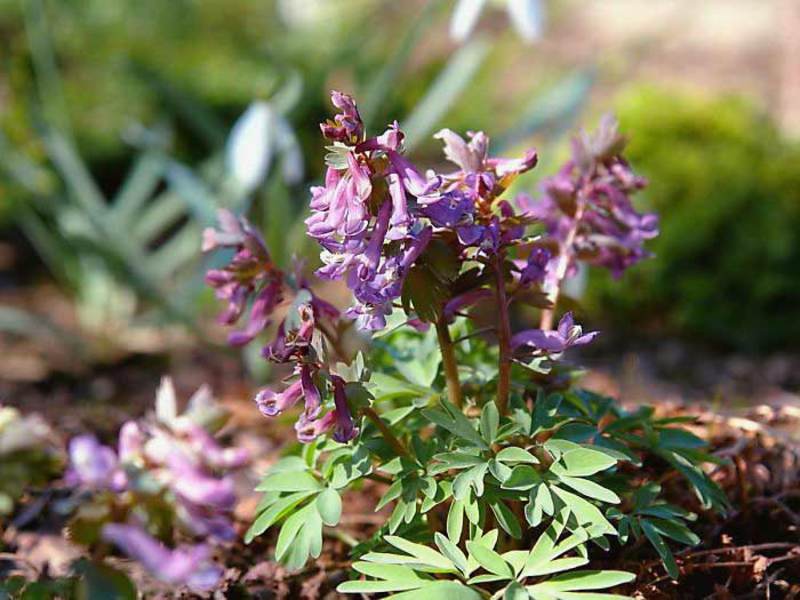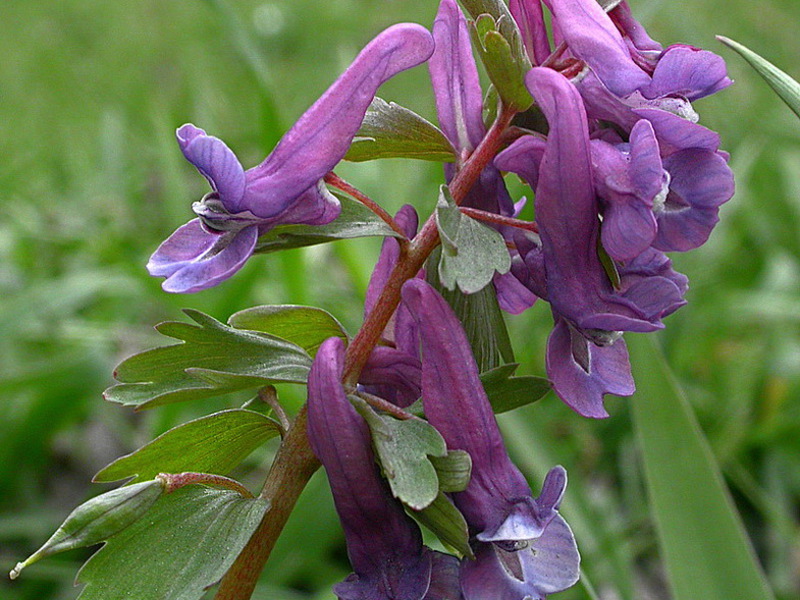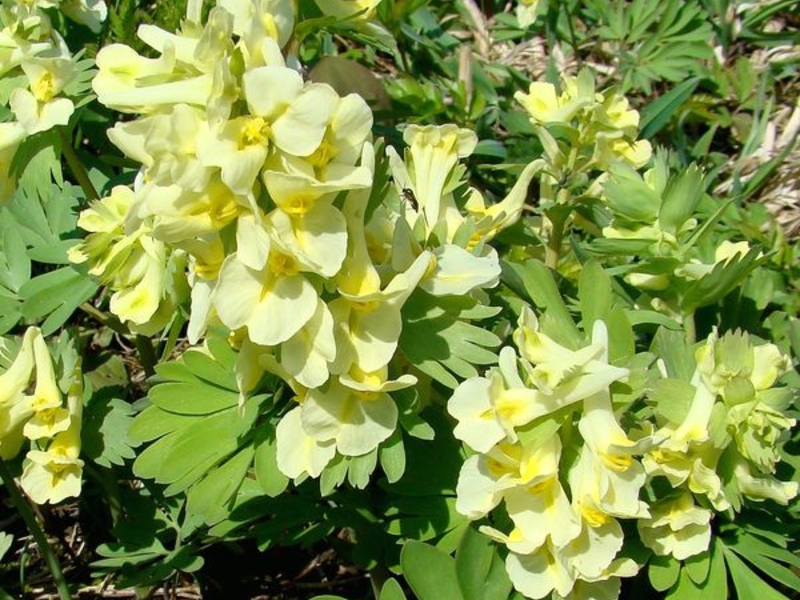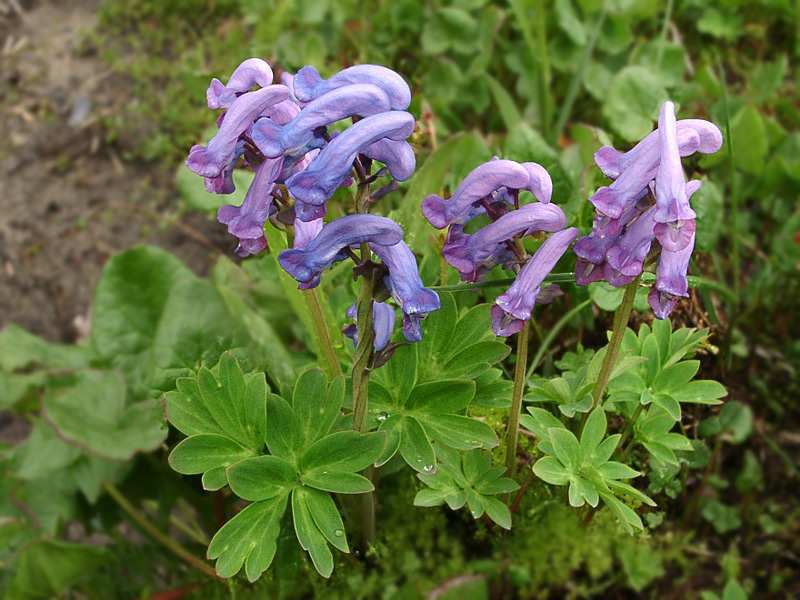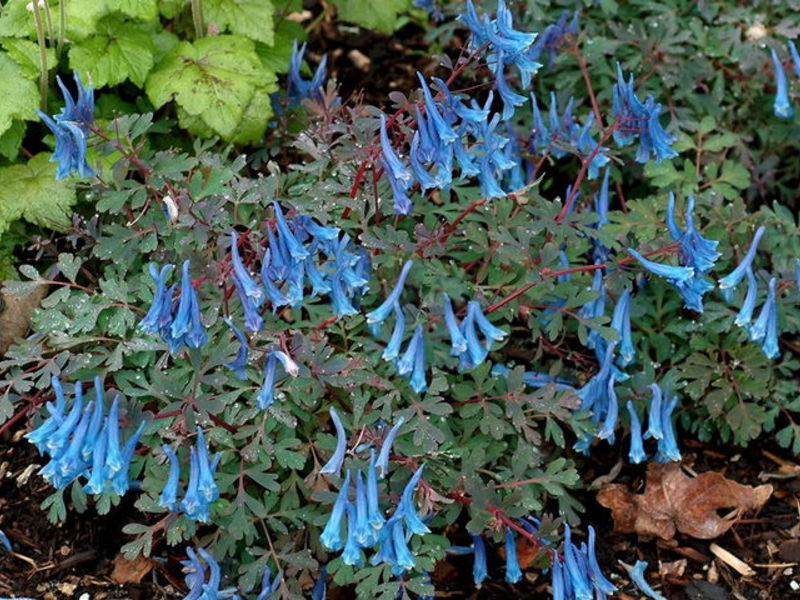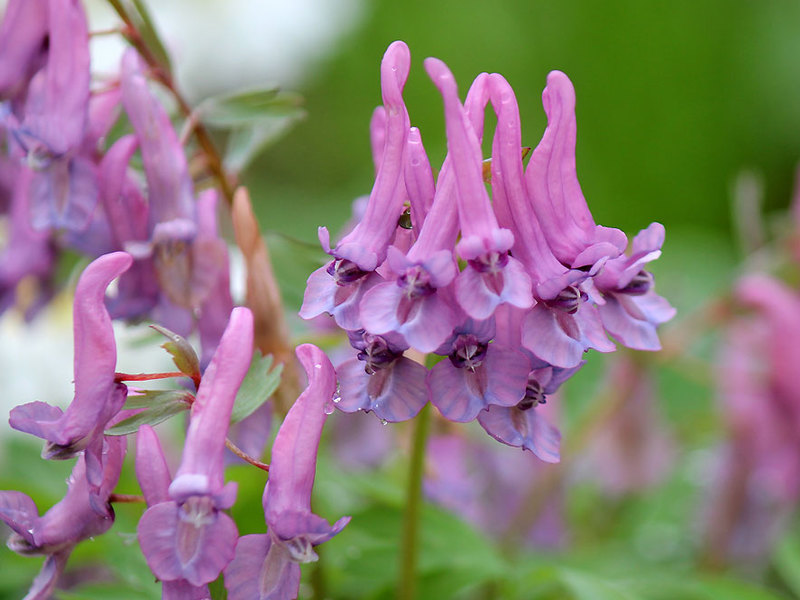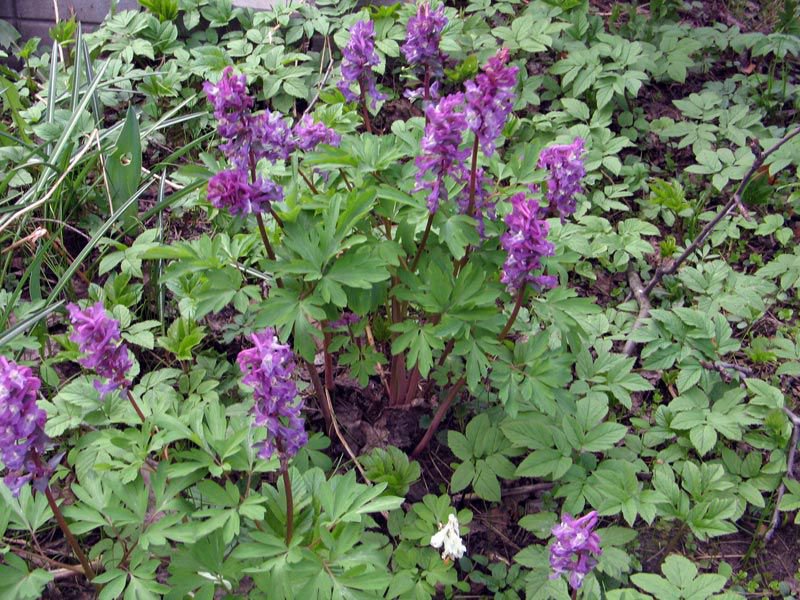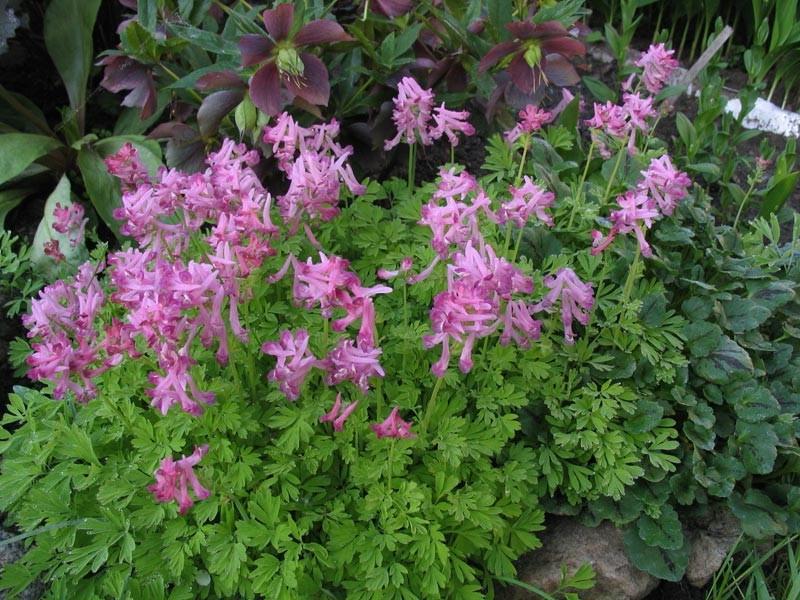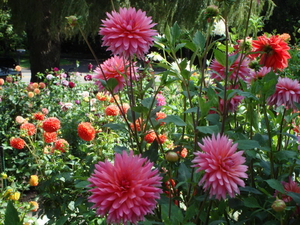With the arrival of spring, when the snow just melts, the sun begins to warm, the first green leaves appear on the trees, primroses begin to bloom in the forest. Already at the beginning of April, the chistyak, anemone, a lumbago, a goose onion and, of course, an amazing corydalis or dyast flower pleases with its flowering. Having taken a liking to the sunny slopes, the Corydalis grows well in shrubs, riparian forests, rocky gardens and near water bodies.
Crested flower - photos and varieties
A perennial plant native to the central and western region of China belongs to tuberous plants. Tubers are rounded roots that spread out in width.
Most plant species grows up to 20-30 cm... Its green or bluish leaves are divided into lobules. On the tops of the stems, there are long flowers collected in a brush, consisting of four petals and reaching a diameter of up to 2 cm. Up to 30 flowers can bloom at once on one peduncle. The outer and inner color of the flower petals are of different color, due to which it seems that the flowers of the corydalis have "eyes".
Popular crested species
In the forests of central Russia grow the most unpretentious plant specieswhich thrive on both light and heavy conventional garden soils.
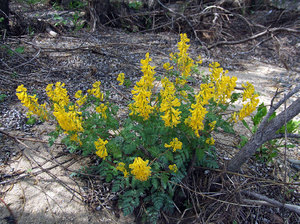 Corydalis Bush is distinguished by a small tuber of irregular shape and grows up to 25 cm. At the top of its branched stem are openwork gray leaves, and at the bottom at the base there are scaly leaves. Pink flowers with a yellow corolla are collected in a dense raceme and framed by toothed bracts. Reproduces well vegetatively and by seeds. Blooms in late spring.
Corydalis Bush is distinguished by a small tuber of irregular shape and grows up to 25 cm. At the top of its branched stem are openwork gray leaves, and at the bottom at the base there are scaly leaves. Pink flowers with a yellow corolla are collected in a dense raceme and framed by toothed bracts. Reproduces well vegetatively and by seeds. Blooms in late spring.- Corydalis dubious or deceiving is a small plant that grows along streams, on the slopes of the sea coast, in tall grasses and forests, forms blue glades. The stem, reaching a height of 10-15 cm, is framed with bluish double-trifoliate leaves. The inflorescence is a loose raceme. It begins to bloom in late April. The seeds ripen in May.
- Bracts are widespread in shrubs and forests of Mongolia and Siberia. Its large bracts are deeply incised. The flowers are 2.5-4 cm long, slightly curved and have a bright yellow color. The racemose inflorescence is located at the top of the stem. It blooms in early May and blooms for about a month.
- Haller's Corydalis belongs to a very light-loving plant. Perennial with a stem from 10 to 25 cm in height and a small dense tuber blooms with pink-purple flowers, which are located on a cylindrical dense inflorescence. Blooms in April and blooms for three weeks.
- The tuberous or hollow corydalis is found in forests of various compositions. It is distinguished by a spherical large tuber, which rotts away with age at the bottom, and grows at the top. On the long cylindrical peduncle of the plant there is a flowering raceme with purple flowers. White, purple-pink or dark purple corolla, about 2.5 cm long. Blooms from April to May.
On the low mountains and in the deserts of Central Asia, other crested species grow:
- Ryast Popova is an Asian plant with vibrant purple-pink flowers and thick white spurs. Flower length reaches 4.5 cm.
- Corydalis Ledebour is distinguished by a multi-flowered raceme, on which flowers of various colors and shapes are located. Thick and sharp spurs can be pale pink, pale yellow, or white, but with bright cuts.
- Ryast Darvaz is a plant with a large, deeply buried tuber, from which several stems grow. The gray leaves of the plant lie on the ground. The flowers are located on a loose brush and are held on thin pedicels. Yellowish or pinkish spurs on the bottom lapel may be strewn with burgundy or brown spots.
- Corydalis is distinguished by a small tuber and green delicate leaves that frame a single stem. Its light purple flowers, collected in a neat brush, have dark limbs. The plant loves damp areas, therefore it is often found near streams under bushes and near melting snowfields.
Corydalis reproduction
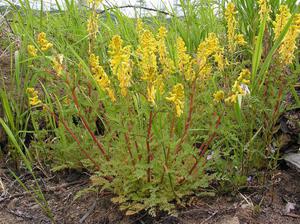 To grow wonderful primroses in your flower bed, you can dig, move and plant a plant from the forest.
To grow wonderful primroses in your flower bed, you can dig, move and plant a plant from the forest.
When digging up a tuber, you need to remember that its roots are quite deep. Therefore, the dug plant must have a large clod of earth.
By dividing the tubers, only certain species of Corydalis reproduce. Small side tubers are formed only by Kashmir and Bush's crested tuber. Large tubers are buried to a depth of 10-15 cm, and small ones - 5-7 cm.
The plant can be propagated by seeds, which must be sown immediately after collection. You should hurry up because the seeds can lose their germination in just a week. When caring for crops, it is necessary to ensure that the soil does not dry out. In a seed-planted Corydalis, flowers will bloom only in the third - fourth year of growth.
Where to plant a crested bird in the garden?
The choice of location depends on the type of plant:
- Asian species love high ridges and slides located in a well-lit place;
- Caucasian and forest crested beetles are best planted in the shade or partial shade of bushes or trees.
A good solution would be to plant the corydalis on the lawns. She will have time to bloom and give seeds even before the first mowing of the grass.
In flower gardens, the plant can be planted between late growing large perennials (hosts or peonies).
Corydalis can be planted even in inconvenient places. For example, under trees or bushes with branches lying on the ground.
When choosing a place, one should not forget about the composition of the soil. Well-drained heavy clay soils are suitable for Asian plant species. Loose soil rich in organic matter is loved by forest crested species.
Forcing primrose
To obtain flowers in off-season, you can use only dense corydalis. When distilling it, it is necessary follow some guidelines:
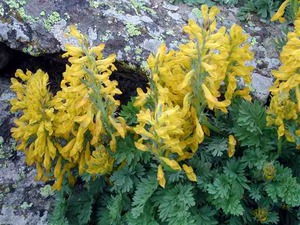 use only undamaged large tubers;
use only undamaged large tubers;- a plant planted in a pot is placed for nine weeks in a dark cool room with an air temperature of -5C;
- in the absence of such a room, the container with the bulbs can be put in the refrigerator, after having covered it with a dark bag;
- at the right time, a flower pot is exposed in a well-lit place;
- special attention is paid to temperature conditions and soil irrigation;
- after flowering, watering continues until the leaves turn yellow.
Pot with faded corydalis put in the refrigerator until spring.
Useful properties of corydalis
The riast tubers are known for their medicinal properties. The preparations made from them have antiseptic, analgesic, anti-inflammatory, hypnotic and antioxidant effects.
The infusions and decoctions made from corydalis tubers are used for bowel diseases, convulsions, arterial hypertension, arthritis, arthrosis, and joint damage. Powder made from the roots of creeper is widely used for the treatment of gynecological diseases, nervous excitability, liver diseases, insomnia.
Corydalis tubers are harvested only after fruiting... They are cut into slices and dried.The rest of the plant contains toxic substances, so they are not used.
Plants planted in a shady garden will grow by themselves over time, forming a blooming carpet every spring. Wherever you look in early spring - under trees, on a rock garden or a lawn - primroses bloom everywhere, of which there are a lot at this time of the year.
